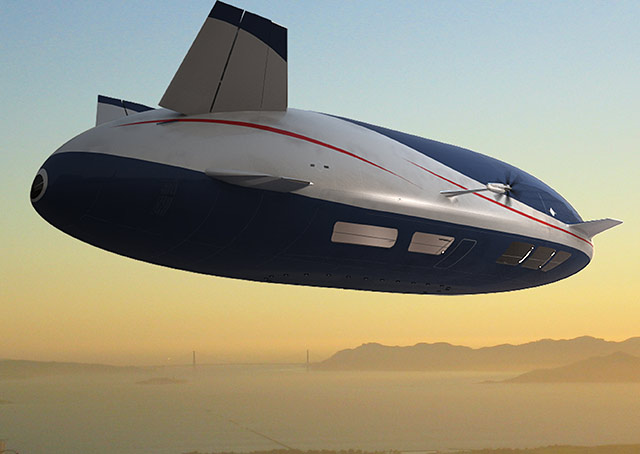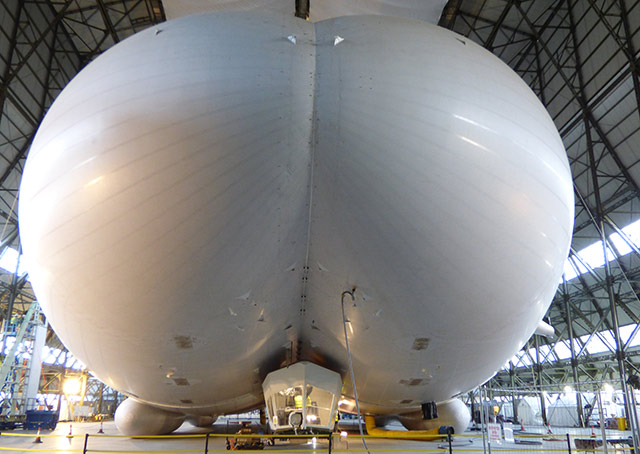
A cargo-hauling non-rigid airship has been built in England with test flights set to start soon. It can haul 10 tons while a proposed second model could haul 50 tons. It joins the Aeroscraft in Los Angeles that is already in development using a flying prototype that is smaller than the planned full-size vehicle.
The Airlander, just completed in Britain by Hybrid Air Vehicles, began life as the HAV 304 for a U.S. Army project in conjunction with Northrop Grumman that failed partly due to loss of funding. It is the subject of a “return to the air” effort. It first flew at Lakehurst, New Jersey, in 2012. The other airship is also a dirigible (meaning a rigid inner frame) called Aeroscraft from the Aeroscraft Corp. in Los Angeles that has been in development by a Ukrainian engineer since the company started 28 years ago. It is currently flying as a 266-foot prototype.
The fully developed 100-knot Aeroscraft will be 555 feet long and able to lift 66 tons. It is hoped to be certified in five years.
The 302-foot-long Airlander is finding new life for commercial purposes—people or cargo. It is to complete 200 hours of flight tests during the remainder of this year but needs a successful $700,000 crowd-sourcing campaign to continue development. After test flights it will be used to attract investors. The first model is the Airlander 10, for 10 tons, while the second model is the Airlander 50, for 50 tons. The Airlander 10 will travel at a claimed 80 knots and loiter at 20 knots. It uses the shape of the vehicle to create lift.
At last report the Airlander, being built in a hangar halfway between London and Birmingham, was “flying” a few feet off the ground inside its hangar, soon to emerge.




